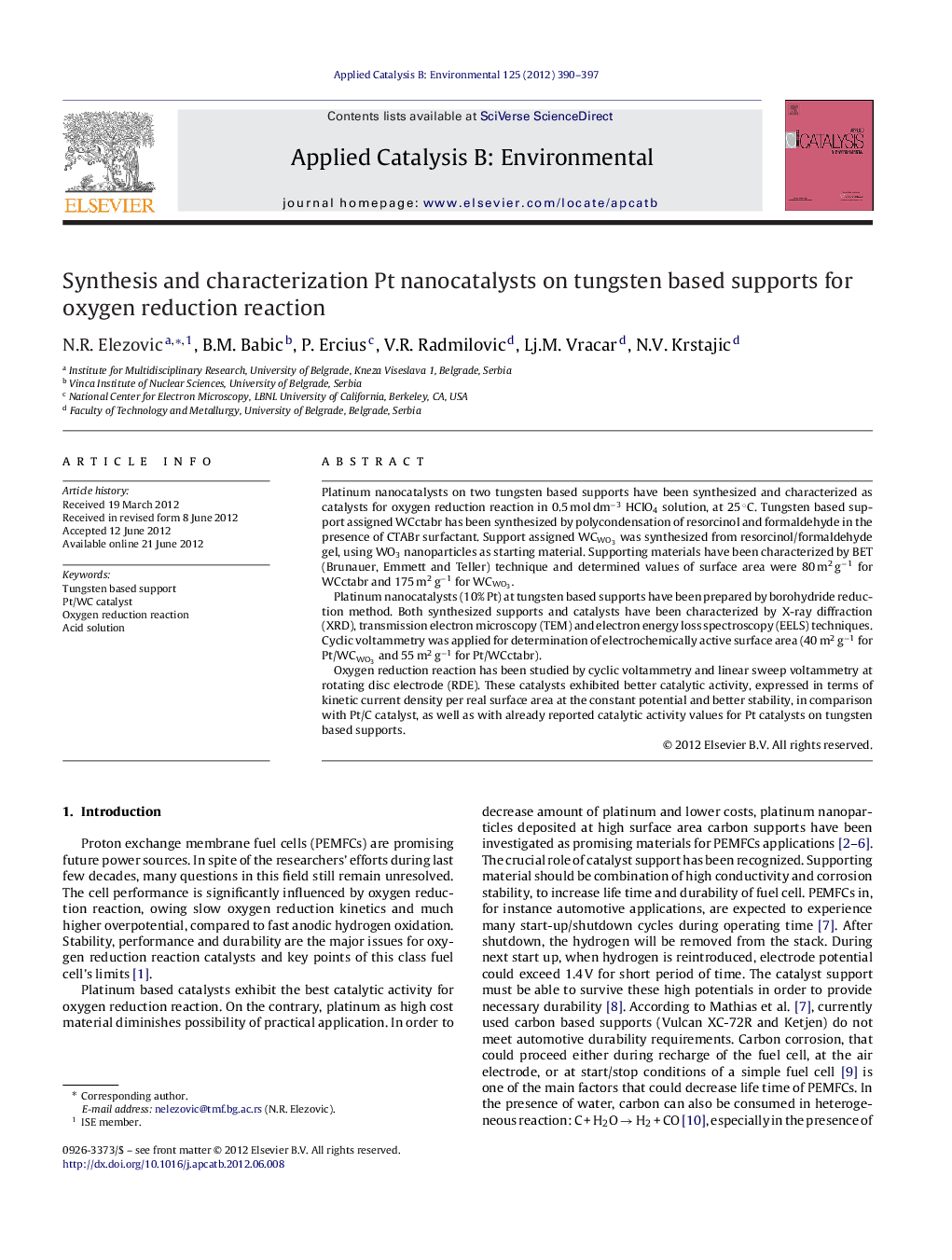| Article ID | Journal | Published Year | Pages | File Type |
|---|---|---|---|---|
| 46091 | Applied Catalysis B: Environmental | 2012 | 8 Pages |
Platinum nanocatalysts on two tungsten based supports have been synthesized and characterized as catalysts for oxygen reduction reaction in 0.5 mol dm−3 HClO4 solution, at 25 °C. Tungsten based support assigned WCctabr has been synthesized by polycondensation of resorcinol and formaldehyde in the presence of CTABr surfactant. Support assigned WCWO3WCWO3 was synthesized from resorcinol/formaldehyde gel, using WO3 nanoparticles as starting material. Supporting materials have been characterized by BET (Brunauer, Emmett and Teller) technique and determined values of surface area were 80 m2 g−1 for WCctabr and 175 m2 g−1 for WCWO3.WCWO3.Platinum nanocatalysts (10% Pt) at tungsten based supports have been prepared by borohydride reduction method. Both synthesized supports and catalysts have been characterized by X-ray diffraction (XRD), transmission electron microscopy (TEM) and electron energy loss spectroscopy (EELS) techniques. Cyclic voltammetry was applied for determination of electrochemically active surface area (40 m2 g−1 for Pt/WCWO3Pt/WCWO3 and 55 m2 g−1 for Pt/WCctabr).Oxygen reduction reaction has been studied by cyclic voltammetry and linear sweep voltammetry at rotating disc electrode (RDE). These catalysts exhibited better catalytic activity, expressed in terms of kinetic current density per real surface area at the constant potential and better stability, in comparison with Pt/C catalyst, as well as with already reported catalytic activity values for Pt catalysts on tungsten based supports.
Graphical abstractNovel Pt catalysts on tungsten based supports for oxygen reduction, with improved catalytic activity and stability.Figure optionsDownload full-size imageDownload as PowerPoint slideHighlights► Two different tungsten carbide based supports were synthesized. ► Pt/WC catalysts were prepared and tested for oxygen reduction in HClO4 solution. ► WC supports and Pt/WC catalysts were characterized by XRD, TEM and EELS techniques. ► Pt/WC catalysts, compared to Pt/C, showed better catalytic activity and stability.
